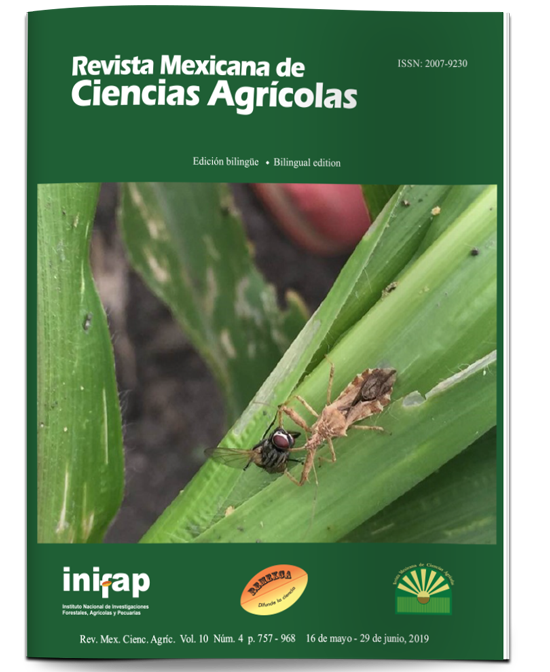Importance of biological control of pests in corn (Zea mays L.)
DOI:
https://doi.org/10.29312/remexca.v10i4.1665Keywords:
entomopathogen, lepidoptera, parasitoidAbstract
Plague insects are one of the main constraints in the production of corn crops. Therefore, they cause damage to the development of the plant and therefore reduce performance. The armyworm Spodoptera fugiperda J. E. Smith and Heliothis zea (Boddie), (Lepidoptera: Noctuidae) are the most present in the cultivation of corn. For the control of these and other pests, the most used control are chemical insecticides; the main disadvantages of its use have been the contamination of the environment and the resistance of insect pests, this has caused damage to the environment and resistance. An alternative is the use of entomopathogenic microorganisms, predators or parasitoids. Within these are entomopathogenic fungi such as Metarhizum anisopliae (Metchnikoff) Sorokin, and predators of the family Coccinellidae as Cycloneda sangunea (Linnaeus), being these most used in biological control. Also, some parasitoids such as Telenomus remus (Nixon) (Hymenoptera: Platygastridae). Therefore, the advantages of biological control is to reduce levels of pest infestation to a proportion that do not cause economic damage, reduce the spectrum of action and also do not generate pollution to the environment. The biological control depends to a large extent on the climatic conditions, phenological stage of the crop and the interaction between the pests and the host.
Downloads
Downloads
Published
How to Cite
Issue
Section
License
The authors who publish in Revista Mexicana de Ciencias Agrícolas accept the following conditions:
In accordance with copyright laws, Revista Mexicana de Ciencias Agrícolas recognizes and respects the authors’ moral right and ownership of property rights which will be transferred to the journal for dissemination in open access. Invariably, all the authors have to sign a letter of transfer of property rights and of originality of the article to Instituto Nacional de Investigaciones Forestales, Agrícolas y Pecuarias (INIFAP) [National Institute of Forestry, Agricultural and Livestock Research]. The author(s) must pay a fee for the reception of articles before proceeding to editorial review.
All the texts published by Revista Mexicana de Ciencias Agrícolas —with no exception— are distributed under a Creative Commons License Attribution-NonCommercial 4.0 International (CC BY-NC 4.0), which allows third parties to use the publication as long as the work’s authorship and its first publication in this journal are mentioned.
The author(s) can enter into independent and additional contractual agreements for the nonexclusive distribution of the version of the article published in Revista Mexicana de Ciencias Agrícolas (for example include it into an institutional repository or publish it in a book) as long as it is clearly and explicitly indicated that the work was published for the first time in Revista Mexicana de Ciencias Agrícolas.
For all the above, the authors shall send the Letter-transfer of Property Rights for the first publication duly filled in and signed by the author(s). This form must be sent as a PDF file to: revista_atm@yahoo.com.mx; cienciasagricola@inifap.gob.mx; remexca2017@gmail.
This work is licensed under a Creative Commons Attribution-Noncommercial 4.0 International license.



